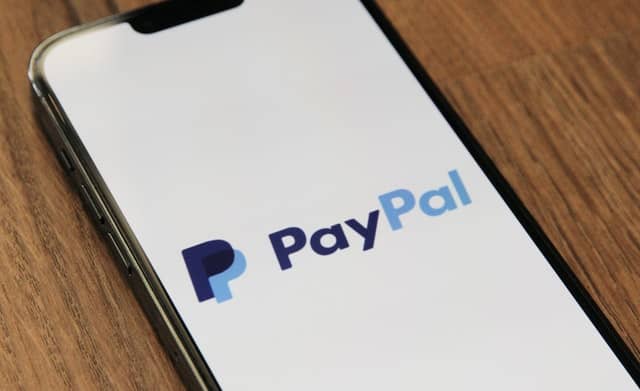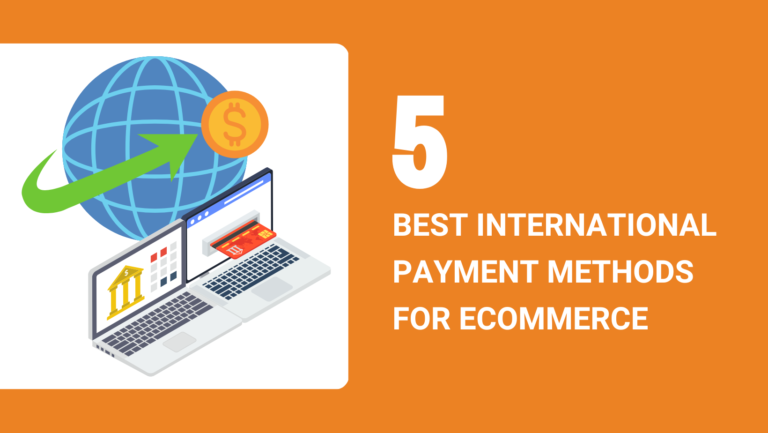When you’re a foreign buyer sourcing your products cross-border, you need to familiarize the different international payment methods available.
This will give you the power to make an informed decision when you need to pay the exporter and negotiate favorable terms and conditions.
When calculating your eCommerce profit margins, things like shipping Incoterms and international payment methods really matter. They will have a large impact on your end product price and the profit margin you can achieve.
So, let’s dive right in and see the five most commonly used methods of payment in international trade!

1. Cash-In-Advance
Cash in advance is one of the most common and well-known international payment methods. It minimizes the risk for the exporter or seller, but not for the importer who is paying in advance, before the transfer of the ownership of the goods.
With that said, cash-in-advance is still widely preferred by exporters who sell to unknown buyers or those who sell smaller quantities to a large volume of buyers.
Some of the most commonly used cash-in-advance methods are:
- Wire transfers
- Credit or debit cards
- Escrow services
- Payment by check
Wire Transfers
Wire transfer is by far the most widely used cash-in-advance payment method for wholesale and bulk orders. It’s very quick and convenient. Don’t be confused – a wire transfer is the same as a T/T payment.
In short, the seller gives his bank routing information to the buyer, such as:
- The receiving bank’s name and address
- The seller’s name and address
- SWIFT address
- ABA number
- Bank account title
- Account number
With these details, the buyer completes the payment in advance, before the exporter ships the goods.
Naturally, there’s a fee that banks will charge for processing SWIFT transactions. This fee can be covered by the buyer, the seller, or split between both parties. It’s a matter of agreement.
Credit Cards or Debit Cards
The next common cash-in-advance payment method in international trade are credit and debit cards. They grew a lot in popularity in recent years due to their convenience and ease of use.
However, they’re more suitable for smaller transactions due to the high fees they charge.
Additionally, credit card transactions are placed online, exposing sellers to the risk of non-payment and even fraudulent activities.
Exporters that sell online to buyers should set up verification processes and precautions to avoid fraud and scams.

Escrow Service
With the spread of the Internet, escrow services became the new favorite in international trade. Escrow is a third-party service that will mediate between the buyer and the seller.
Here’s how that works:
- Step 1 – the buyer puts money in “escrow”.
- Step 2 – the seller confirms the money is there, and ships the goods.
- Step 3 – the buyer receives the goods and is given time to inspect them.
- Step 4 – the buyer confirms receiving the goods in a satisfactory condition, and the escrow money is released to the seller.
In the case of cross-border trade, escrow services are usually banks or other trustworthy companies.
Note that these escrow services will also have an escrow fee. Typically, this fee can be covered by the buyer, or seller, or split equally between both parties.
In any case, escrow is a great way to add an extra layer of security to cash-in-advance payments.
Check Payment
Payment by check is by far the least popular method of cash-in-advance payments, even with exporters. The reasons are numerous:
- Exporters often don’t cash in the checks before shipment, resulting in bouncing checks and non-payment.
- A lengthy process that might take several weeks to collect.
- The collection process is even more complicated and lengthy for foreign currency checks.
All in all, this complexity and length make check payments obsolete, especially for cash-in-advance international trade payments.
Pros and Cons of Cash-In-Advance
Each cash-in-advance method has its own pros and cons. However, let’s go over some of the advantages and disadvantages of using cash-in-advance payment methods in general:
Pros
- The most secure payment method for the exporter
- Exporter runs zero risk of non-payment.
Cons
- The least secure payment method for the importer
- Payment is before you (the importer) receive the goods.
- Importer runs the risk of not receiving the shipment or receiving damaged goods.
- A higher impact on the importer’s cash flow
- An inflexible payment method – exporters risk losing business if this is the only payment method they offer
2. Letters of Credit (L/C)
Letters of Credit are among the safest bets for both exporters and importers since banks appear as intermediaries from both parties who promise and commit to an agreement.
Here is how an L/C works:
- Step 1 – the buyer (importer) instructs his bank to pay an agreed amount to the seller’s bank.
- Step 2 – the buyer’s bank sends a Letter of Credit to the seller’s bank as proof of sufficient and legit funds.
- Step 3 – the seller meets all the terms and conditions and ships the goods.
- Step 4 – payment is released once all terms and conditions are met.
As you can see, Letters of Credit offer both the buyer and the seller a certain degree of protection for cross-border payments. So, an L/C is a great trade finance tool, and it’s one of the most secure methods of payment for both parties – the seller and the buyer.
In fact, compared to the other international payment methods on this list, Letters of Credit have mostly advantages for both parties, especially in terms of payment safety.

Pros and Cons of Letters of Credit
Here are some of the pros and cons of using L/Cs as a payment method:
Pros
- Importers ensure that the exporter ships the goods before releasing payment.
- Exporters get proof of funds before they ship the goods.
- Minimal cons for both parties
Cons
- An expensive payment method
- Can be slightly time-consuming
3. Documentary Collections (D/C)
During a documentary collection process, the seller instructs their bank to forward documents related to the export of the goods, such as a Bill of Lading and instructions for payment to the buyer’s bank.
The bank will release these documents to the importer after payment.
In this process, banks use a draft or a collection letter, also known as a Bill of Exchange, which outlines exactly when the payment and the transfer of title happens.
There are two options:
- Document against payment (DAP) – the importer pays the face amount at sight.
- Document against acceptance (DA) – the importer pays on a date specified in the draft.
So, the export documents, including the transfer of title, are released in exchange for payment in both cases.
Although documentary collections are a more affordable way of payment, they don’t offer the same level of security, especially for sellers.

Pros and Cons of Documentary Collections
Let’s look at the most significant pros and cons of documentary collections as a payment method:
Pros
- Less expensive than Letters of Credit
- Seller retains ownership until payment (payment is made once the goods are delivered).
Cons
- Importers can’t check the shipment before payment.
- Exporters carry the biggest risk – no payment guarantee, verification, or protection against canceled orders.
4. Open Account Terms (O/A)
Next, we have an open account payment, otherwise known as Accounts Payable. Here, the seller exports and ships the goods with no payment, and gives the buyer a credit period of 30, 60, or 90 days. Within this period, the importer has to pay the exporter.
Needless to mention, open accounts are risky for sellers and exporters that don’t trust the buyers. There is absolutely no guarantee that the buyer will pay at all.
However, for sellers that have regular, trustworthy buyers, offering O/A as a payment method can put them at an advantage compared to other sellers in the industry.
Buyers love open account terms since they can preserve their cash flow and pay after selling their stock.
All in all, an open account is one of the safest payment options for buyers, but the least safe one for sellers.
Pros and Cons of Open Account Terms
Here are the most note-worthy pros and cons of open account terms:
Pros
- One of the best payment methods for buyers
- The buyer receives the goods before payment
- Sellers who offer open account terms can stay competitive in saturated markets
Cons
- One of the riskiest international payment methods for sellers
- A high risk of non-payment
- No protection against cancellations

5. Consignment Payment Method
Finally, we have the consignment payment terms, a type of open account payment. The consignment payment method is by far the most favorable for importers since it has the most minor effect on cash flow and it allows importers to pay only for what they manage to sell.
However, exporting on consignment terms is risky for the seller since they are physically transferring the goods without any guarantees. So, the risk of non-payment with consignment is significant for exporters.
Note that the exporter retains the ownership title until the moment the distributor (importer) sells to the end customer. So, if the distributor doesn’t manage to sell the entire stock, they can return it to the exporter.
Consignment is sort of like lending bulk products to a sales middle-man who is the importer in this case. So, importers pay the seller or exporter only what they manage to sell, and return the rest.
Pros and Cons of Consignment
Now, let’s go over the pros and cons of choosing the consignment payment method for your transactions.
Pros
- The most secure payment terms for importers
- Payment to the exporter is due only after selling goods to the end consumer.
- A very small impact on the importer’s cash flow
- Inventory reduction and costs for exporters
- Works well in competitive markets
Cons
- The riskiest payment terms for exporters
- Exporters don’t have a payment guarantee
- Exporters get paid only after the importer sells to their end customers.
- Higher inventory storage and management costs for importers
FAQs about International Payment Methods
Last but not least, let’s look at some of the most frequently asked questions on the subject of international payment methods:
What Is International Payment?
International payments are all outgoing and incoming transactions from one country to another. In the case of trade and commerce, a buyer from one country purchases stock from a seller in another country.
Different international payment methods are there to facilitate these transactions and provide terms and conditions under which the transactions will get processed.

What Are the Safest Methods of Payment in International Trade?
The safest method of payment for sellers or exporters is cash-in-advance since they’re receiving the payment before shipping the goods. On the other hand, the safest method for importers or buyers is consignment or open account terms.
What Are the Best International Online Payment Methods?
Some of the best international online payment methods are:
- Credit cards (VISA, MasterCard, American Express, etc.)
- PayPal
- TransferWise
- Payoneer
- Debit cards
- Western Union
- Online bank transfer
When talking about international payment methods, we have to make a difference between that and payment gateways such as Stripe, PayPal Payment Gateway, etc.

Wrapping Up
The five international payment methods explained above represent the main types of international transactions we encounter in eCommerce and sourcing products from abroad.
So, hopefully, we’ve managed to clarify things, aiding you in making an informed decision.
If you’re still not sure which international payment methods to use when buying from China, we can help. Get a free quote today, and we will help you choose the safest overseas payment methods that fit your business needs.

